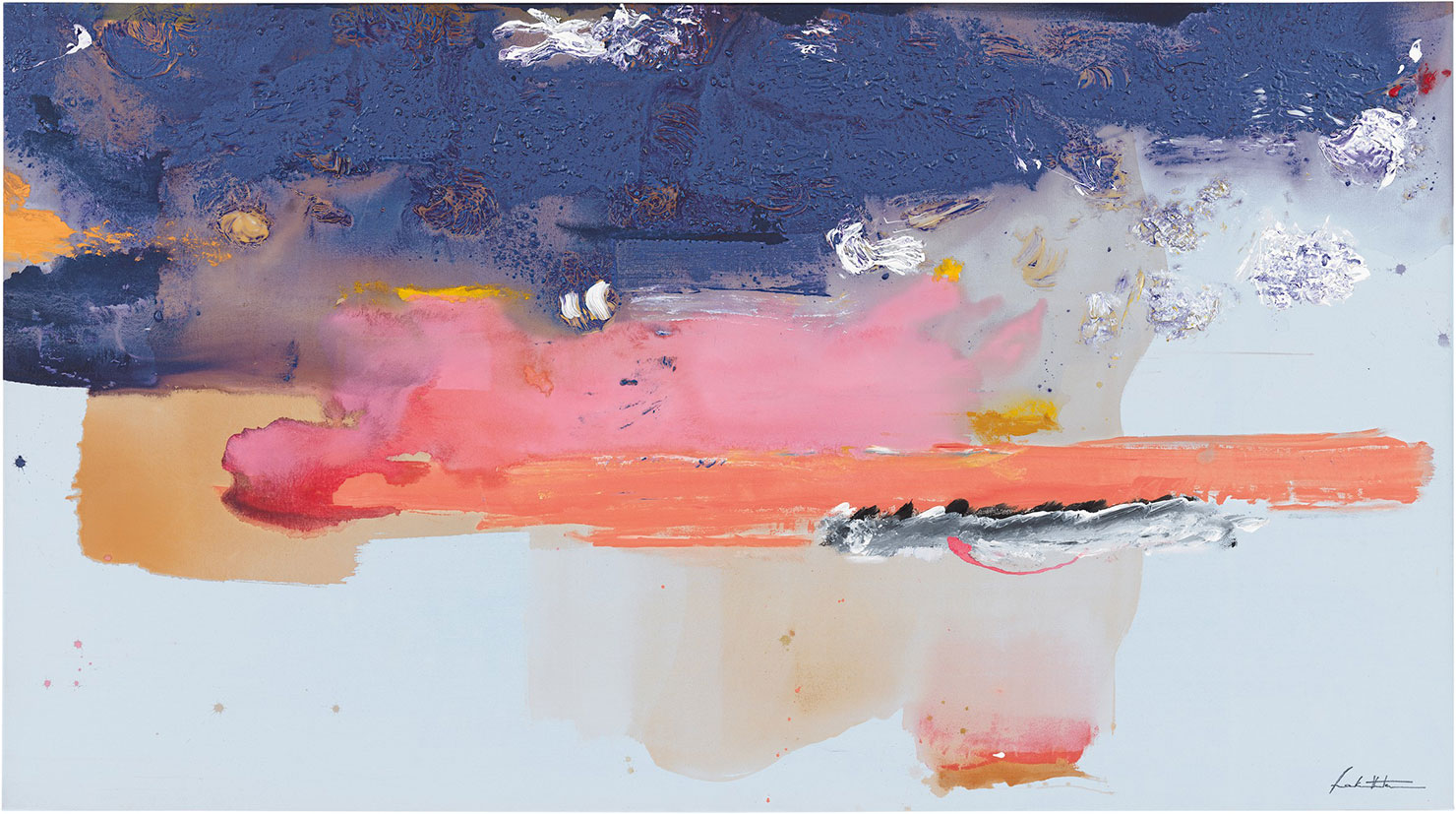ART CITIES : N.York-Helen Frankenthaler
 Helen Frankenthaler, whose career spanned six decades, has long been recognized as one of the great American artists of the 20th Century. Heir of first-generation Abstract Expressionism, she brought together in her work a conception of the canvas as both a formalized field and an arena for gestural drawing. She was eminent among the second generation of postwar American abstract painters and is widely credited for playing a pivotal role in the transition from Abstract Expressionism to Color Field painting.
Helen Frankenthaler, whose career spanned six decades, has long been recognized as one of the great American artists of the 20th Century. Heir of first-generation Abstract Expressionism, she brought together in her work a conception of the canvas as both a formalized field and an arena for gestural drawing. She was eminent among the second generation of postwar American abstract painters and is widely credited for playing a pivotal role in the transition from Abstract Expressionism to Color Field painting.
By Efi Michalarou
Photo: Gagosian Archive

In the exhibition “Drawing within Nature: Paintings from the 1990s” are on show twelve paintings and two large-scale works on paper by Helen Frankenthaler. This is the first time in almost two decades that a group of the artist’s paintings from this era have been presented in New York, with some that have never previously been exhibited. Frankenthaler’s celebrated 1952 composition, “Mountains and Sea”, was the first of her soak-stained canvases and was highly influential in the development of 1960s Color Field painting. By the 1970s, though, she had amplified her methods to include the expressive possibilities of surface inflection and density. Over the course of the 1980s, highly painterly canvases became her principal pictorial means, soon resulting in, during what would be her final decade, canvases of the greatest dramatic impact of her entire career, some of an unexpectedly large size.The exhibition features works dating from 1990 through 1995, made following Frankenthaler’s paintings retrospective which opened in 1989 at the Museum of Modern Art, New York. Composed in her studios in New York; Stamford, Connecticut; and Santa Fe, New Mexico (where she held a summer teaching residency at the Santa Fe Institute of Art in 1990 and 1991) these abstractions are inspired by the artist’s experience of landscapes. Works in the exhibition include “Poseidon” (1990) which calls on qualities of Frankenthaler’s earlier soak-stained canvases to evoke ocean currents, with its wet-on-wet passages of aqua, white, and green. The even larger “Stella Polaris” (1990) sets streams and patches of dense cloudlike white paint beneath the starlight of its title. “Western Roadmap” (1991) transforms the desert rock and glowing sunsets of the American Southwest into a stratified abstraction that hangs within an almost nine-foot-wide panorama. “Reef” and “Spellbound” (both 1991) lay out washes of rich, glowing color of varying density across dark grounds. The verdant hues of “The Rake’s Progress” (1991) suggest a garden in bloom, and show how Frankenthaler began to use gel to thicken her paint as well as combing and raking tools to create tracks bearing the imprint of the energy passing over the surface. Painted a few years later, in acrylic on large sheets of paper, “Flirt” and “Aerie” (both 1995) are less grounded in memories of landscape vistas. Rather, their open, cursive forms invoke vividly colored and magnified details of drawing within nature.
Photo: Helen Frankenthaler, Western Roadmap, 1991 Acrylic on canvas, 58 × 104 inches (147.3 × 264.2 cm), © 2023 Helen Frankenthaler Foundation, Inc./Artists Rights Society (ARS), New York. Photo: Rob McKeever, Courtesy Helen Frankenthaler Foundation and Gagosian .
Info: Gagosian Gallery, 541 West 24th Street, New York, NY, USA, Duration: 9/3-15/4/2023, Days & Hours: Tue-Sat 10:00-18:00, https://gagosian.com/



